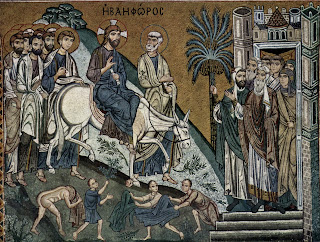Maundy Thursday, 13 April 2017

Maundy Thursday, 13 April 2017 Exodus 12:1-4, (5-10) 11-14 Psalm 116:1, 10-17 I Corinthians 11:23-26 Saint John 13:1-17, 31b-35 Background: Passover Like a great number of religious rites and festivals, Passover has a history that discloses several more ancient usages and meanings. It is thought that the festival is the descendant of an ancient nomadic feast, the Shepherd’s Rite, and a Canaanite agricultural feast. In Exodus 5:1 , and 10:9 we have some evidence of a rite that precedes the Passover celebration that we know from later in Exodus. Combined with these two roots is also the Feast of Unleavened Bread ( see Deuteronomy 16:16 ), probably the oldest of the festivals in the liturgical calendar. Some commentators see the original locus of the Passover rites as being in the home itself. Later, under the reforms of Josiah, and the Deuteronomic school, the celebrations may have been combined into a feast that was celebrated by both home and nation. As a nati
